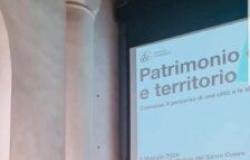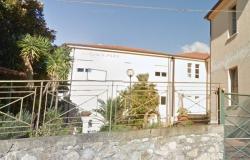Not the Viareggio of worldly and glittering modernity, the tourist paradise of the rich cosmopolitan holidaymakers of the early twentieth century, but the Viareggio of the old Darsena, the neighborhood where the poor people lived a difficult existence: this is the city in which Lorenzo grew up and was educated Viani (1882-1936). His father, who worked in the ducal villa of the Bourbon family, had lost his job, and this plunged the family into poverty. Lorenzo was then put to work as a boy in a barber shop and here he had the opportunity to meet a promising artist among the customers who frequented the place: Plinio Nomellini. It was Nomellini himself who pushed the boy to cultivate his passion for drawing, leading him to enroll first at the Art Institute of Lucca, then at the Academy of Florence, where Giovanni Fattori held his courses.
But Viani had developed within himself an intolerant and rebellious nature, which made him deaf to every academic discipline. The language of the scrub supported by the master from Livorno was a dead letter for him. Rather, Viani looked with special interest at the post-Impressionist experiences that were maturing in those years in France and the rest of Europe.
His production will therefore be oriented towards an anti-naturalistic, dissonant and exasperated style, in consonance with the contemporary elaborations of Italian expressionism, of which he will become one of the greatest exponents. In his compositions Viani will resort to the physical deformation of the figures, using a dense, heavy brushstroke and an essential palette, set on a very limited chromatic range, playing almost exclusively on intense blacks, dirty greys, browns and browns. . The intent was to give the images a sense of hallucinated solitude, of dejection, of anguished disturbance, close to the atmospheres of Ensor or Munch. Think about it The obsessed onea disturbing work of extreme crudeness, which caused enormous sensation and indignation at the time.
In addition to his libertarian beliefs (which in the post-war years evolved towards a progressive approach to fascism), Viani shared with Nomellini an interest in a painting with a strong social and humanitarian vocation, committed to illustrating, in forms devoid of any patheticism and commiseration, the dramatic living conditions of the poor and marginalized: a theme that was widely reflected in the painting (and literature) of the time. In Viani the miserable spectacle of the daily vicissitudes of the poorest is tinged with a desolation and fatalism of a Verga-like flavour, which however does not exclude emotional closeness and profound empathy. The emaciated and sorrowful figures that populate his paintings seem to express a sort of silent resignation. In their dry and sad faces, marked by hunger and suffering, there is no dignity and pride of the marching proletarians of Pellizza da Volpedo. Rather, there is the instinctive submission to a bitter, hopeless fate.
In the paintings exhibited these days at the GAMC in Viareggio (the exhibition will remain open until 5 May 2024) this dark vision of the human condition fully emerges. Consider them in particular Holy face And Blessing of the dead in the sea, two large-format canvases, where gloomy female figures, all cloaked in black and arranged on the scene next to each other as in a classical relief, perform ritual gestures of a painful popular liturgy; or again Poor family, where the fixity of the characters and the bloodless chromatic material give the representation a poignant emotional charge; or Prisoners, The blind man’s prayer, The widows of the sea, Two figures in the swampother images where we grasp Viani’s ability to make the events of the humble emblematic: works created through a rough, essential language of great expressive intensity, which induces the viewer to identify.
The exhibition, which aims to retrace the entire creative arc of the master from Viareggio, alongside the most important paintings, presents some landscapes (Viareggio streeta delightful youthful work rendered with fast, feverish brushstrokes; St. Andrew); a large group of woodcuts, the same ones that had aroused the admiration of D’Annunzio and Boccioni; a series of watercolors and pastels dedicated to the children of the school (the painter’s wife was a teacher); as well as one Crazy headthe only known sculpture by Viani, which here refers to the ways of Medardo Rosso.
But welcoming the visitor in the first room of the exhibition is the undisputed masterpiece of the artist’s full maturity: Marble workers in Versilia. Made on commission, this monumental canvas responds to a celebratory intent, to glorify work (as in a certain Sironi of those years). The powerful figures of the oxen in the foreground (a tribute to Fattori’s mastery) and the group – almost a sacred icon – of the woman with the child on the right of the painting correspond, in the background, to the harsh landscape of the Apuan Alps, rendered with cubists. A celebratory image, it has been said, of extraordinary expressive power, far from the tragic vision of existence that dominated Viani’s previous works; a work in which one can breathe, also through the recovery of traditional Christian iconography, the dimension of the sacred, the memory of a popular and ancient religiosity, still strong and alive.
Nicola Rossello
– Advertisement –






